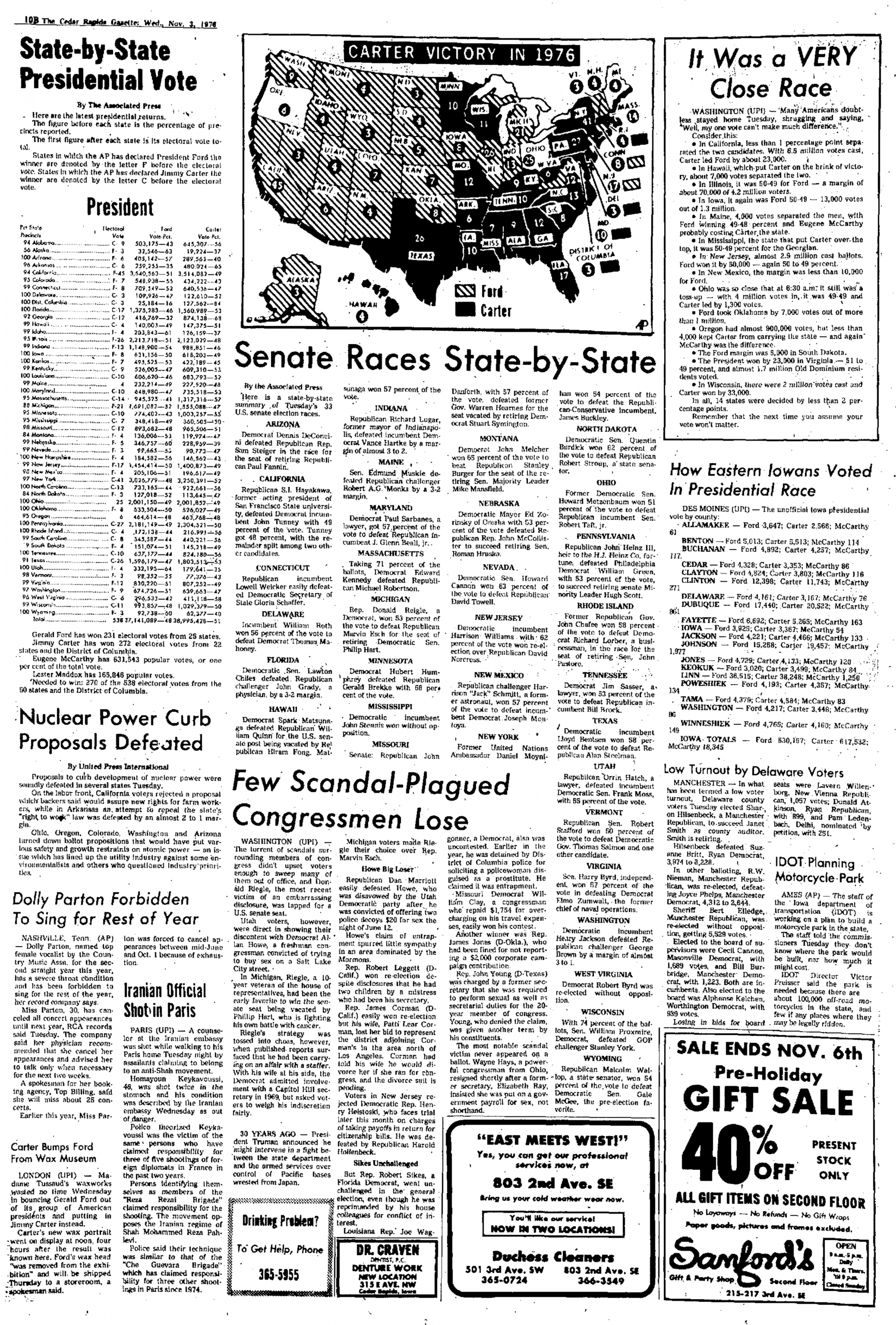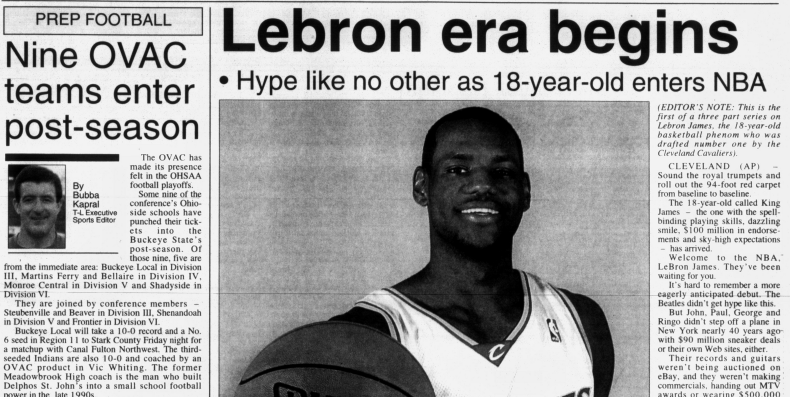On a cool October day in 2003, excitement was growing among fans of the NBA as the rookie Lebron James prepared for his first game in the professional league. An extremely talented player, Lebron was drafted straight from high school as a first-round draft pick by the Cleveland Cavaliers. Going pro straight out of high school was almost unheard of, but LeBron’s talent spoke for itself. The Times Leader, published in Martins Ferry, Ohio, described it as a “hype like no other” as they welcomed in the “LeBron era”. The author describes a feeling of excitement on levels unseen by the NBA for a player unlike any other, both on and off the field. In his first game, the 18-year-old put up 25 points, six rebounds, and nine assists, and cemented his place in the league despite the Cavaliers losing the game to the Sacramento Kings. This debut was the first of many games played in the NBA for the player who would soon be dubbed ‘The GOAT’.

If you have found yourself fascinated by the recent Louvre museum heist, I have a feeling you are going to love the next event we have to talk about. On October 27th, 1985, the Musée Marmottan Monet in Paris experienced its own encounter with thieves. Unlike the Louvre heist, this theft was done by masked thieves who threatened security and visitors with firearms. A few of the thieves held control of the crowds as the others smashed the glass around paintings and stole them. They took nine paintings in total, including five works by Claude Monet and two by Pierre Renoir. Like the Louvre heist, this plan was executed in under 10 minutes, and the bandits made off with the invaluable pieces of art. It was also a highly sophisticated plan. The Quincy Herald Whig shared a quote from investigators, who believed that the thieves were “connesoirs” and “knew exactly what they were looking for”. The paintings were not recovered until 1990, following a lengthy investigation after French officials received a tip from a Japanese art collector. Thankfully, the paintings had only suffered minimal damage that was easily repaired.
(1945 – 1980s) Polls and Politics: Presidential Election, 1976
On November 2nd, 1976, Americans cast their vote for the 39th president of the United States. The race between Jimmy Carter and incumbent President Gerald Ford was close. Ford was facing declining approval ratings, mostly a result of the difficult administration he inherited. After Nixon resigned from office following the Watergate scandal, Ford had to pick up the pieces as Americans grew distrustful of the administration. His administration also saw high inflation rates and a less-than-ideal economy. Carter was newer to the scene, having served only in the senate and a single term as the governor of Georgia, but he knew exactly how to play to his advantage. Carter’s campaign was long thought out and strategically skilled, and he benefited from the blunders made by Ford in debates to garner voter support. Americans turned out and cast their votes, and on November 3rd, the victory was given to Carter. The Gazette, published in Cedar Rapids, Iowa, on November 3rd, 1976, described the race as “very close”, citing incredibly small margins between winning votes. One shock among the results was that Texas had turned blue, something that is rarely seen in presidential elections. While the quality of his presidency is a debated topic, Carter is remembered for being a kind and compassionate person, even after his time in office.

As the United States entered the 1920s, the stock market began to grow rapidly. More and more Americans invested as the market expanded, drawing significant attention. By September and early October of 1929, the stock market had started to decline, but not enough to cause panic. Then came the crash.
On October 24, 1929, worry began to set in over the rapidly declining stock values. On this day, over 12 million shares were traded as investors scrambled to salvage what they could from their investments. Major banks tried to stabilize the market by buying up stocks to reduce panic, but their efforts were unsuccessful.
October 28 marked the beginning of a drastic decline, and the following day, October 29, became known as “Black Tuesday”—the day the stock market crashed completely. On this day, over 16 million shares changed hands as investors and shareholders lost billions of dollars. The Advertiser Journal in Auburn, New York, reported that 14 billion dollars in quoted stock values were lost, noting that the losses on October 29 were greater than on previous days. The New York Stock Exchange was overwhelmed by the sheer number of people trying to trade stocks, which had to be done in person at the time. Workers fell behind as their machines couldn’t keep up, while shareholders waiting to trade were filled with panic as they witnessed their investments fail. In the immediate aftermath, stock prices began to rise slowly again, if only because they couldn’t drop any lower. However, the crash significantly accelerated the Great Depression, as the unstable stock market contributed to a broader economic crisis.
(1824 – 1920) No Alcohol For Americans: Prohibition Era Begins, 1919
On October 28th, 1919, the Volstead Act was signed into law, effectively beginning the era of prohibition in the United States. Encouraged by the temperance movement, the Volstead Act allowed the government to enforce the 18th Amendment of the U.S. Constitution, which banned the production or sale of any alcoholic beverages. This act set the legal definition of an alcoholic beverage as containing over 0.5% alcohol content. Not everyone was a fan of Prohibition; many believed it seemed like a response to a non-issue. Some people hoped it wouldn’t last long. In the Stanhope Eagle, published in Netcong, New Jersey, in the days after the Volstead Act became law, they shared hope for a brief ‘wet’ period following the ratification of the peace treaty with Germany. However, their hopes for a quick end to prohibition went unfulfilled, and the 18th Amendment wasn’t repealed until the end of 1933. In the nearly 13-year period when Americans couldn’t legally buy or drink alcohol, many found ways around the law. It was in this era that we saw speakeasies grow in popularity, as Americans found ways to break the law of prohibition in secret. While it may have initially been done with good intentions, I think most Americans can agree that Prohibition wasn’t the best choice the country has made.
Join me again next week to discover more of history’s hidden gems and timeless tales.
Explore the “Read All About It” archives to read stories that spotlight our partners and their communities, announcements from our team, updates on current projects, and so much more. Discover articles about engagement, outreach, primary sources, community, digitization, education, and other topics of interest. Delve into the happenings in this week in history and take a deep dive into the events and people who helped shape our communities, our nation, and the world.
Hear Ye, Hear Ye, READ ALL ABOUT IT!
Advantage Archives works to build strong, community-based partnerships to provide free online access to local history, making it discoverable and easily accessible to anyone, anywhere, at any time, on any device. This allows communities to understand and connect to their past in a meaningful way. Through the Community History Archive search platform, we provide the community with the means to explore, discover, learn from, connect with, and share the stories of the people, places, and events that shaped their community.
The Community History Archives are intended to serve as a “portal to the past”, allowing local primary source documents to give an accounting of history as told by the individuals who witnessed it. Advantage Archives guiding principles center around building strong community-based partnerships, which is why we enter into them with the intent of shouldering our fair share, and taking the burden off of the community for the ongoing costs associated with storage, hosting, development, and maintenance of the Community’s History Archive. We are an active participant in the community’s efforts to make their collective history more accessible. The Community History Archives are maintained for free by Advantage and do not require a subscription, seat license, annual support contract, or any other ongoing costs or expenses to the institution or members of the community.
If you would like to see more local history online, please contact your local library, newspaper publisher, genealogical society, historical society, or educational institution, and encourage them to learn more about creating a Community History Archive or have them contact Advantage Archives at (855) 303-2727.



